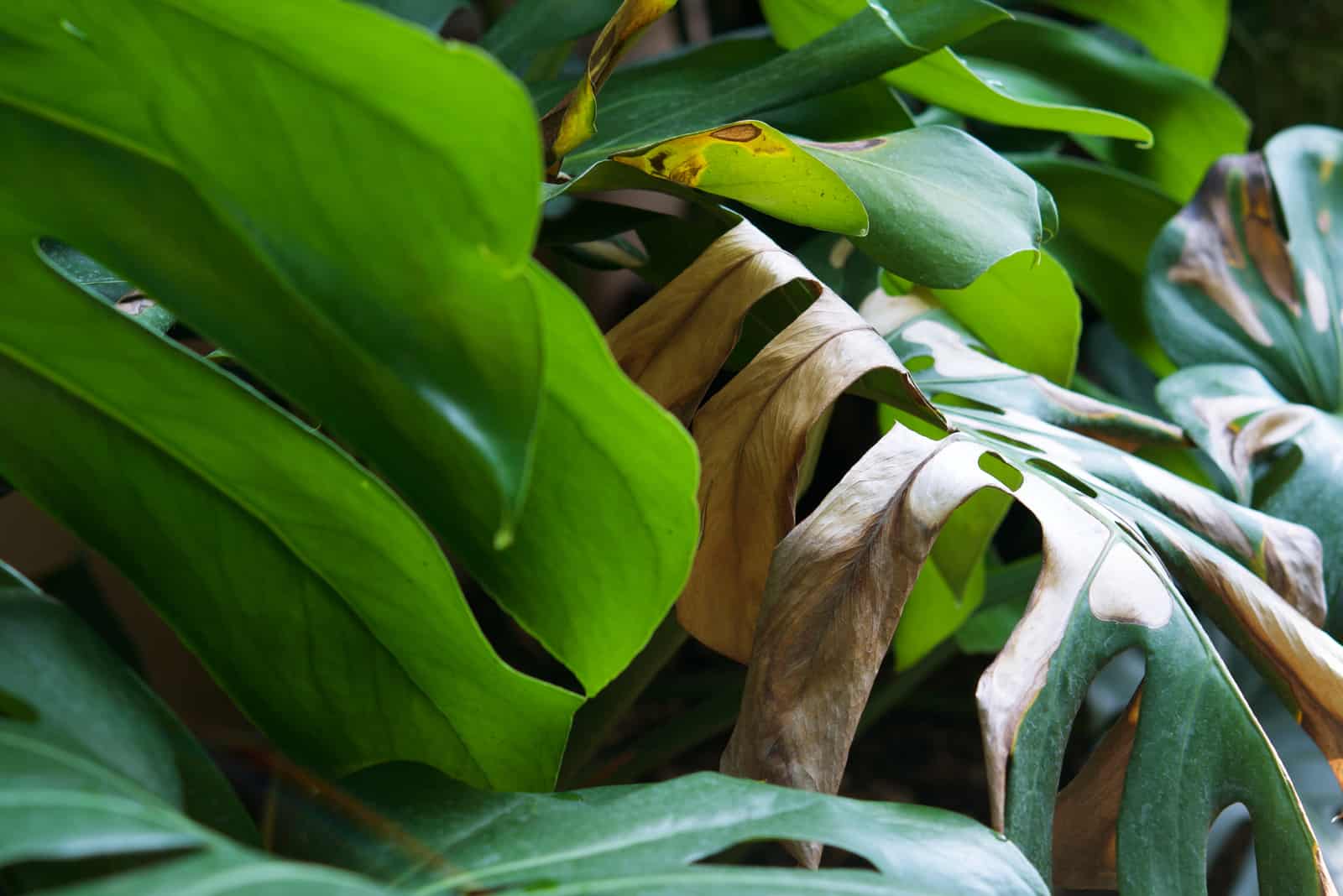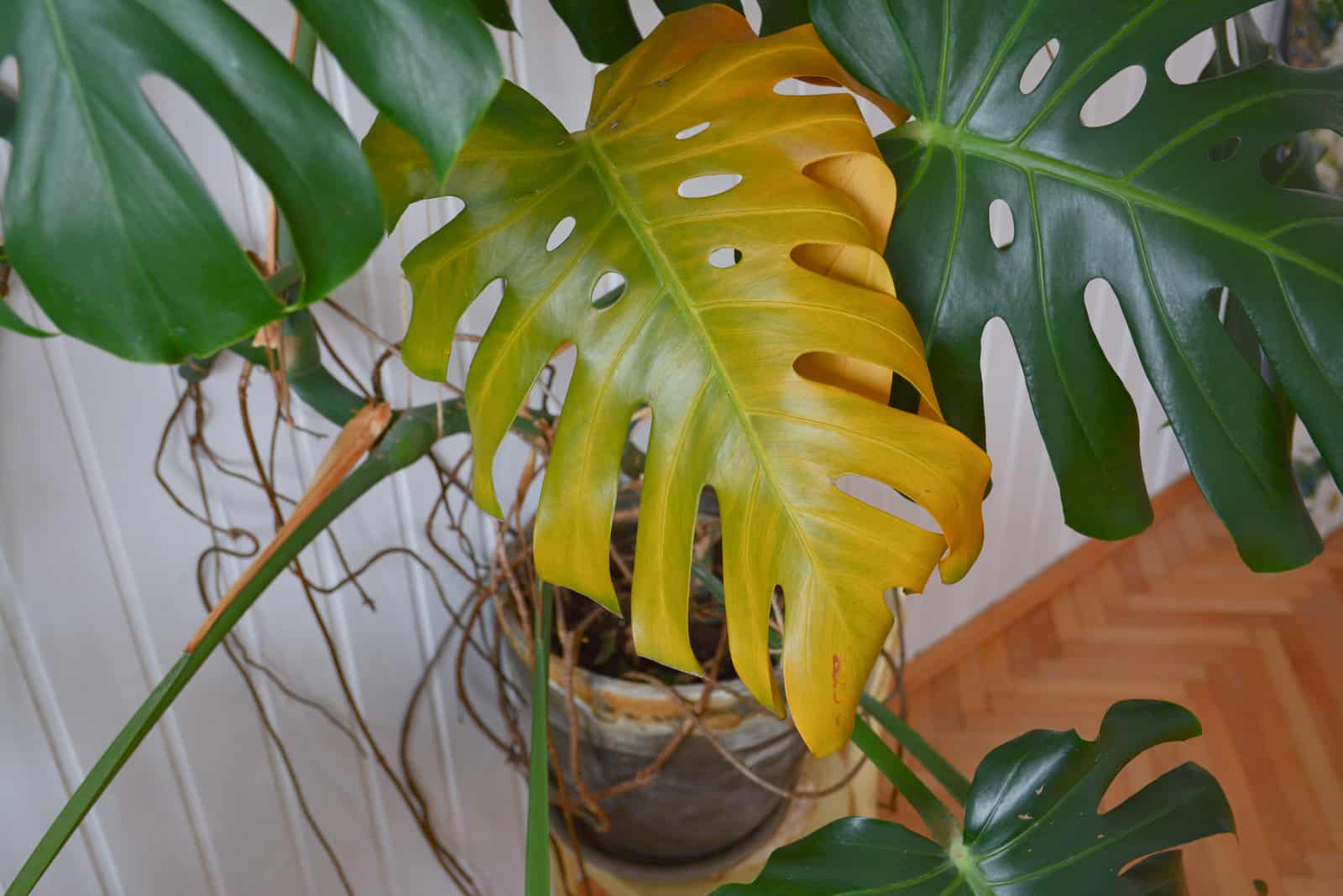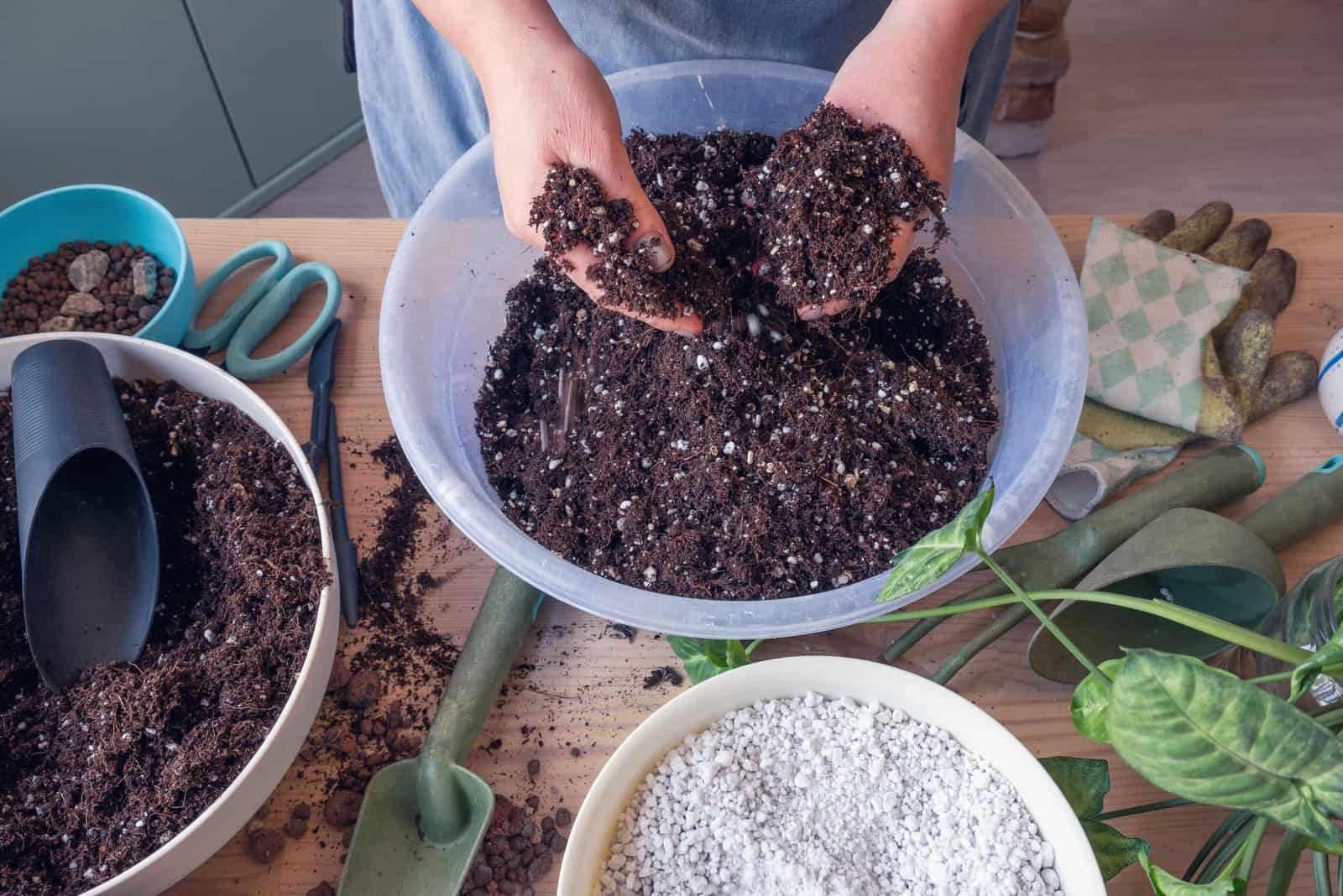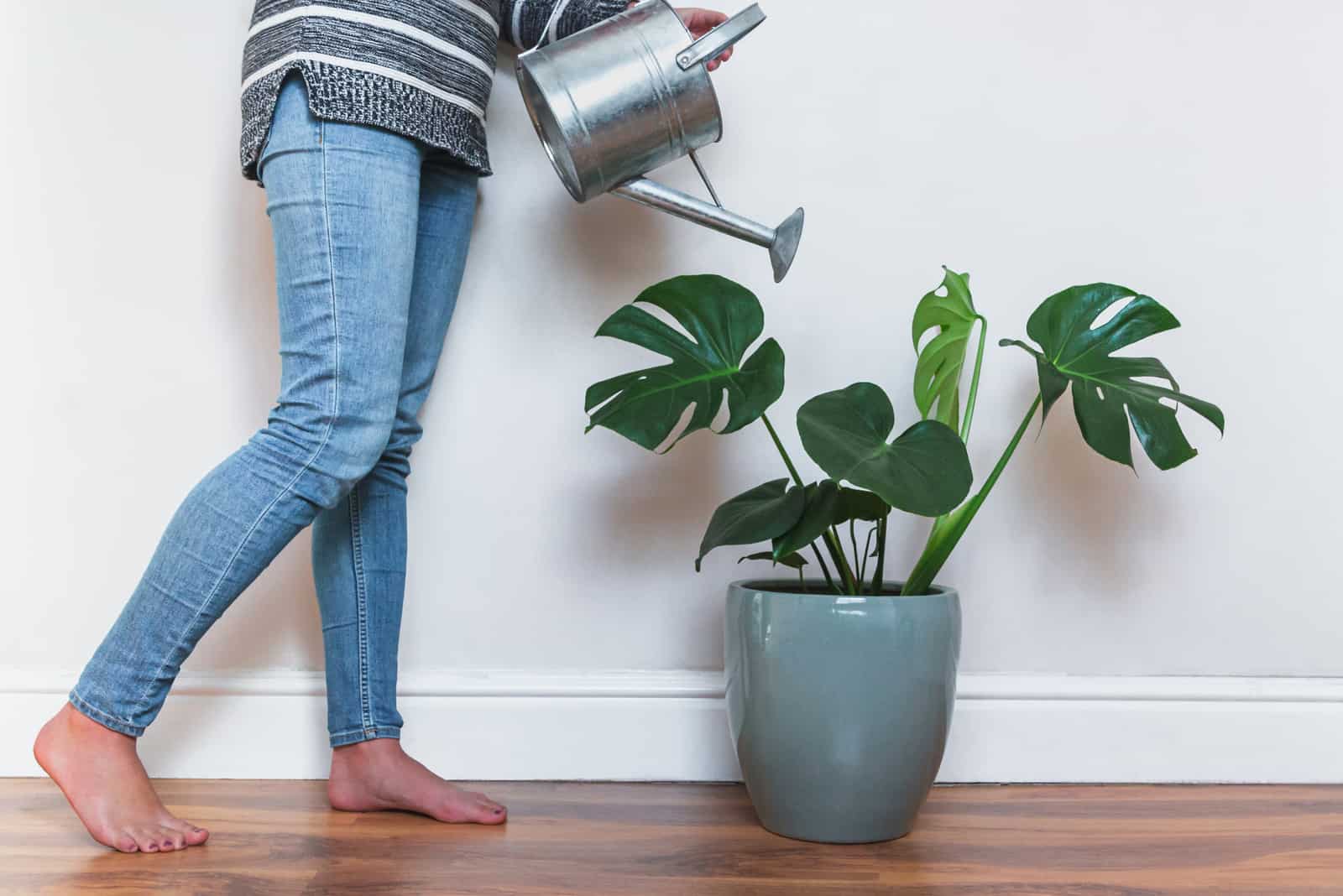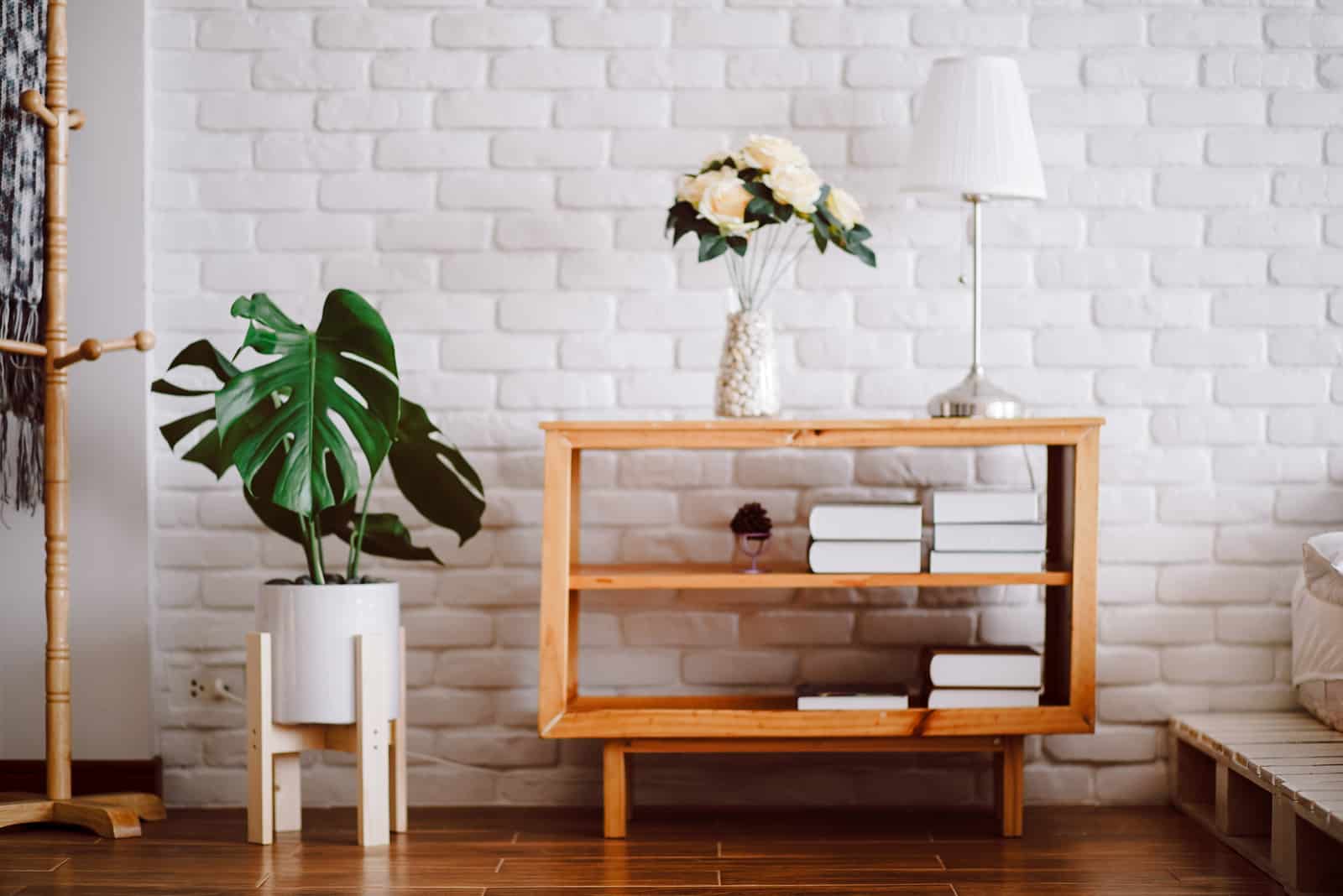Positive Bloom is an Amazon Associate and we earn from qualifying purchases through these links at no extra cost to you.
One of the most common houseplants is the Monstera, also known as the Swiss cheese plant, Monstera Deliciosa, and Split Philodendron, and it would certainly make for an excellent addition to your home. However, the fact is that this is a tropical plant, and as such needs water, but an overwatered Monstera becomes subject to several complications.
Sure signs that you have an overwatered Monstera are chocolate brown leaves, black root rot, leaves turning yellow, mold growth on the top of the soil, blisters on the leaves, and extremely wet soil. Saving an overwatered Monstera includes cleaning and washing the root, using new potting soil, adjusting watering, and finding a new place for the plant.
Read on to discover detailed answers on how to recognize the signs of overwatering, and also how to save your overwatered Monstera plant.
6 Signs of an Overwatered Monstera
Signs of an overwatered Monstera include chocolate brown leaves, root rot, leaves turning yellow, mold on the top of the soil, blisters on the leaves, and extremely wet soil.
In order to determine if you have overwatered your Monstera plant, you should scan it from the very bottom of the pot so you don’t miss anything. Check the pot, the root system, the leaves, and the plant’s soil.
Inspect these 6 signs of overwatering so that you can move on to revival as soon as possible.
1. Chocolate Brown Leaves
The leaves of a monstera are deep green, so if you notice that they have changed color to chocolate brown, it’s highly likely that overwatering is the cause.
Why is that so?
Plants need oxygen (fortunately, they produce more than they take). Excess water will disrupt the airflow in the root system, which will lower the amount of oxygen the plant needs.
Leaves respond to this by developing chocolate brown spots.
2. Black Root Rot
Although this sign may be the hardest to spot, there are ways to check it.
First, take a look at the leaves. If they are drooping or have brown spots, the root system demands further observation.
Another indicator of root rot is a foul odor. Therefore, if there’s an unpleasant smell coming from the soil, it’s likely the monstera’s roots are in danger!
If you notice this sign of over watering, you need to act immediately!
A healthy root system is fundamental because it directly affects the other parts of the plant.
Over watering will cause soggy soil, so be sure to read on to find out everything you need to know about soil. Soggy soil will increase the monstera’s susceptibility to diseases caused by pathogens.
One of the most common pathogens are fungi, which decompose the tissue of the root.
You will have to stop the pathogens spreading using the methods shown in the “How To Save An Overwatered Monstera” section below.
Excess water will be consumed by fungus, so the fungus will be able to easily spread across all the parts of the plant, starting with the root.
3. Leaves Turning Yellow
Yellow leaves are another indicator of over watering Monstera plants.
Monstera leaves are sensitive, and over watering causes a reduction in nutrient supply to the root system, which leads to the appearance of yellow leaves.
Yellow leaves appear when they don’t get enough oxygen. Air circulation is disrupted due to the amount of water in the soil.
Poor drainage systems allow water retention in the soil much more than it should.
Although yellow leaves can also be a sign of underwatering, you should inspect the root system in order to give the right diagnosis. If you notice root rot, you should adjust your watering. Read on to find out how to adjust watering.
4. Mold Growth On Top Of Soil
If you notice mold on the top of the soil, your Monstera is overwatered.
Mold on the top of the soil indicates the presence of fungi in the soil.
Over watering is the reason the fungi spreads on the top, resulting in mold.
Air space in the soil can become clogged due to over watering. When this happens, oxygen can’t get to the root system, which leads to mold on top.
If there are dead leaves on the soil, it’s important to remove them as they make the soil more susceptible to mold.
5. Extremely Wet Soil
This is also a sign of over watering.
A Monstera needs well drained and fresh soil. If the soil seems wet and takes too long to dry, you should check soil moisture. Soil moisture can be measured with your finger, a wooden stick, or moisture meter.
One of the ways to check if the amount of water is the problem is by simply putting your finger in the soil.
You can also use sticks made of wood. A clean stick means the soil is dry, and if the soil remains on the stick, you have wet soil.
Another more reliable way is to use a moisture meter, which you can find on Amazon.
Wet soil will damage the root system and cause wilting.
Additionally, wet soil is a breeding ground for various pests.
6. Blisters On The Leaves
Another sign of an underwatered Monstera is blisters on the leaves of the plant.
When the roots receive enough water, leaves can easily respire.
If overwatered, the Monstera plant’s roots will take up more water than they need, so the leaves can’t transpire the excess water, which causes the cell to rupture. Consequently, blisters on the leaves appear.
How To Save An Overwatered Monstera Plant
Now we have discussed the signs of an overwatered Monstera, let’s discuss how to go about saving your Monstera plant.
Wash And Clean The Roots
If the root system shows symptoms of over watering, here is what you can do:
1. Take the plant out of the pot. This will help you see any changes in the root system.
2. Prepare pruners and sterilize them. If the roots are affected by pathogens such as fungi, you should use fungicide.
3. Remove any root which looks unhealthy (root rot). Use sterilized pruners and cut off the affected roots.
4. After removing the affected roots, wash the other roots thoroughly.
5. Let the roots and the soil dry.
6. The next step is to repot your Monstera. Use a clean pot to avoid spreading the pathogens which cause root rot. If you are purchasing a new one, it shouldn’t be much larger in size because it could cause the roots to drown. If you are using the old pot, make sure it is well cleaned and disinfected before you use it.
Use New Potting Soil Mix
What is considered to be a good potting mix?
It should drain well and hold moisture. In order to achieve this, Monsteras needs soil of 5.5 to 6.5 pH.
The best mix contains coco coir, pine bark, and perlite. A perfect potting mix should follow this ratio: 1:4:1.
Buy a pot with drainage holes so that you can see if the water drain system is good enough.
A Water drain system follows this pattern: between each watering, the water gradually dries and the soil presents the signs it needs to be watered. A good water drain system prevents the water from being retained in the soil, which would cause further damage.
Poor drainage systems can lead to many complications.
3 steps for ensuring the best conditions for the soil to dry:
1. Choose the right pot: The pot should not be too big, because if there is more soil around the root system than there should be, the soil will retain excess water and become mushy.
2. Pay attention to drainage holes: in order to avoid root rot, all excess water must be drained from the soil. This will prevent root rot and create a safe environment to help your Monstera grow healthily.
3. Large pots need more soil, which means that watering needs to be adjusted as there is soil all around the root system. In other words, watering should occur less frequently.
Read on to see the entire watering process explained in great detail in the Adjust Watering section.
Air space in a soil’s potting mix should not be clogged with water. This will prevent oxygen from accessing the roots and could destroy the entire system.
Old soil that has been contaminated should always be replaced with fresh soil in order to avoid any further complications. Observe your plant so that you can spot any changes and react in good time.
Adjust Watering
We have now seen what the signs of an overwatered Monstera are. In order to avoid this, we must adjust our watering. If you want to save your Monstera and avoid over watering, these rules and suggestions for the ideal watering schedule should help.
How should you water your Monsteras?
Let’s first look at what should we pay attention to before watering:
• Always check the soil moisture (use finger, wooden stick, or moisture meter)
• Use the watering can you use for other houseplants (avoid sink, bathtub, or similar places, where the danger of excess water is increased)
• If you are wondering what kind of water is best to use when watering, it is filtered water or water you leave overnight so the chemicals that could harm your plant can evaporate
• Before watering, bear in mind that leaves should not be watered. You can either choose bottom watering or watering over the top of the soil. Water carefully, or you risk either over watering or underwatering
• The temperature during winter is lower, so it’s important to take into consideration that it will need less water than during summer (of course, you should always check the moisture level regardless)
• Don’t soak the entire plant, instead water over the top of the soil until it reaches approximately two inches below, or alternatively apply bottom watering
• Soak gradually, don’t pour the entire prepared amount of water all at once, let the soil soak properly
• The best temperature for watering is room temperature
If you’re more into a visual representation, check out this video:
Watering schedule
• Even though it may seem like the time of day doesn’t play a role in a good watering schedule, you should choose early morning or before sunset to water your plants. This is because watering plants at noon during the summer, for example, increases the risk of water evaporation, which could lead to an underwatered Monstera.
• Water once a week normally, or every two weeks during the summer
• Wait a few weeks after the last watering during the winter months
Before each watering, make sure that the soil is well drained and that there are no signs of over watering. Checking the moisture level is always very important.
Find A New Place For The Plant
Although I’m sure you placed your Monstera in the most aesthetically pleasing place possible for your home, this may not provide the environment it needs for healthy growth.
First, check the light level and see if that’s causing any problems.
Direct sunlight can damage the leaves of the Monstera plant and cause sunburn or dry out the soil.
Choose indirect sunlight instead.
If possible, move the plant to a room with a window so it can get more indirect light and fresh air (try to imitate its natural surroundings).
If a Monstera grows in a room with low light, its drainage system could be damaged.
Ensure it has enough light by moving the plant to a brighter and warmer place. Enough light will help the water drain effectively between each watering.
FAQs
What does an overwatered Monstera look like?
An Overwatered monstera has chocolate brown or yellow leaves, black root rot, mold on the top of the soil, blisters on the leaves, and/or extremely wet soil.
Can Monsteras recover from over-watering?
Yes, they can recover from over-watering. If you want to save an overwatered Monstera, try to wash and clean the roots (use sterilized pruners, sterilize after each use, use fungicide if the fungus caused root rot, and wash after removing the affected roots) use new potting mix (the best is one made of coco coir, pine bark, and perlite), adjust watering, and/or find a new place for it (avoid places with low light).
How do you tell Monstera is overwatered or underwatered?
An overwatered Monstera has yellow leaves, while the underwatered Monstera has curly leaves. The soil is wet with an unpleasant smell due to overwatering, and if under watered the soil is completely dry. Over watering prevents new leaves from growing, while an underwatered Monstera’s leaves still grow, although this new growth is not as fast as it should be. Root rot and mushy soil are signs of over watering, while underwatering causes papery roots.
What factors affect a Monstera’s need for water?
Factors that affect a Monstera’s need for water may be too much exposure to indirect light and the humidity level. Indirect light will increase its need for water, as will low humidity.
To Sum Up
There are different signs of overwatered Monstera, and chocolate brown or yellow leaves, root rot, mold on the top of the soil, blisters on the leaves, or extremely wet soil are all equally serious problems.
Each of them is caused by excess water retained in the soil, and creates an environment which prevents healthy growth.
Don’t take any of these signs lightly. Act as quickly as possible and save your Monstera plant by washing and cleaning the roots, using a new potting mix, adjusting watering, and/or finding a new place for it.
Until next time!
Like this post? Please share or pin it for later!


